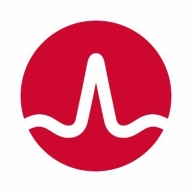

DX Spectrum and Datadog are key players in network monitoring. Datadog has the upper hand due to its flexibility and user-friendly approach, catering effectively to dynamic environments.
Features: DX Spectrum excels with its device monitoring, SNMP trap management, and third-party integrations. Datadog shines with versatile integrations, user-friendly dashboard creation, and real-time monitoring, enhancing business operations.
Room for Improvement: DX Spectrum requires a modern interface and better non-Broadcom tool integration. Datadog needs improved cost transparency, advanced alerting capabilities, and enhanced AI features.
Ease of Deployment and Customer Service: DX Spectrum is on-premises, fitting traditional setups but faces customer service issues post-Broadcom acquisition. Datadog offers flexible cloud deployment and exceptional customer service with proactive support.
Pricing and ROI: DX Spectrum uses device-based licensing, ideal for large enterprises but complex. Datadog's usage-based pricing escalates with use, yet provides good value with a focus on real-time insights.
Previously we had thirteen contractors doing the monitoring for us, which is now reduced to only five.
Datadog has delivered more than its value through reduced downtime, faster recovery, and infrastructure optimization.
I believe features that would provide a lot of time savings, just enabling you to really narrow down and filter the type of frustration or user interaction that you're looking for.
When I have additional questions, the ticket is updated with actual recommendations or suggestions pointing me in the correct direction.
Overall, the entire Datadog comprehensive experience of support, onboarding, getting everything in there, and having a good line of feedback has been exceptional.
I've had a couple instances where I reached out to Datadog's support team, and they have been really super helpful and very kind, even reaching back out after resolving my issues to check if everything's going well.
Broadcom technical support is very good.
Datadog's scalability has been great as it has been able to grow with our needs.
We did, as a trial, engage the AWS integration, and immediately it found all of our AWS resources and presented them to us.
Datadog's scalability is strong; we've continued to significantly grow our software, and there are processes in place to ensure that as new servers, realms, and environments are introduced, we're able to include them all in Datadog without noticing any performance issues.
Datadog is very stable, as there hasn't been any downtime or issues since I've been here, and it's always on time.
Datadog seems stable in my experience without any downtime or reliability issues.
These incidents are related to log service, indexes, and metric capturing issues.
It would be great to see stronger AI-driven anomaly detection and predictive analytics to help identify potential issues before they impact performance.
The documentation is adequate, but team members coming into a project could benefit from more guided, interactive tutorials, ideally leveraging real-world data.
In future updates, I would like to see AI features included in Datadog for monitoring AI spend and usage to make the product more versatile and appealing for the customer.
Currently, they appear as pop-up messages, but I would prefer having alarm messages shown as a scrolling bar at the taskbar for easier visibility.
The event management should have more deduplication and alert correlation and check the bidirectional communication with ServiceNow.
The setup cost for Datadog is more than $100.
Everybody wants the agent installed, but we only have so many dollars to spread across, so it's been difficult for me to prioritize who will benefit from Datadog at this time.
My experience with pricing, setup cost, and licensing is that it is really expensive.
The price of DX Spectrum is not competitive when compared to other solutions, such as SolarWinds.
Our architecture is written in several languages, and one area where Datadog particularly shines is in providing first-class support for a multitude of programming languages.
Having all that associated analytics helps me in troubleshooting by not having to bounce around to other tools, which saves me a lot of time.
Datadog was able to find the alerts and trigger to notify our team in a very prompt manner before it got worse, allowing us to promptly adjust and remediate the situation in time.
The interface has the needed configuration for visualization, and it's effective in providing a complete diagram of network links and connections across various stations globally.
DX Spectrum uses an SNMP Trap to accept all the details, especially for device monitoring of faulty devices, allowing me to use Spectrum effectively.
| Product | Market Share (%) |
|---|---|
| Datadog | 3.1% |
| DX Spectrum | 1.0% |
| Other | 95.9% |


| Company Size | Count |
|---|---|
| Small Business | 80 |
| Midsize Enterprise | 46 |
| Large Enterprise | 95 |
| Company Size | Count |
|---|---|
| Small Business | 26 |
| Midsize Enterprise | 19 |
| Large Enterprise | 88 |
Datadog integrates extensive monitoring solutions with features like customizable dashboards and real-time alerting, supporting efficient system management. Its seamless integration capabilities with tools like AWS and Slack make it a critical part of cloud infrastructure monitoring.
Datadog offers centralized logging and monitoring, making troubleshooting fast and efficient. It facilitates performance tracking in cloud environments such as AWS and Azure, utilizing tools like EC2 and APM for service management. Custom metrics and alerts improve the ability to respond to issues swiftly, while real-time tools enhance system responsiveness. However, users express the need for improved query performance, a more intuitive UI, and increased integration capabilities. Concerns about the pricing model's complexity have led to calls for greater transparency and control, and additional advanced customization options are sought. Datadog's implementation requires attention to these aspects, with enhanced documentation and onboarding recommended to reduce the learning curve.
What are Datadog's Key Features?In industries like finance and technology, Datadog is implemented for its monitoring capabilities across cloud architectures. Its ability to aggregate logs and provide a unified view enhances reliability in environments demanding high performance. By leveraging real-time insights and integration with platforms like AWS and Azure, organizations in these sectors efficiently manage their cloud infrastructures, ensuring optimal performance and proactive issue resolution.
DX Spectrum is a complete event and fault management system for network operations teams. The tool provides powerful capabilities for managing your dynamic, complex IT infrastructure, which includes physical, virtual, and cloud environments.The technology allows you to manage and optimize the infrastructure and the professional services that operate on top of it. DX Spectrum is a unified platform that helps your company enhance network service levels while lowering monitoring costs.
DX Spectrum has intelligent event correlation and root-cause analysis capabilities. It can pinpoint the precise components that are causing issues with availability and network settings. Reports and dashboards can be customized with role-based views. Change management solutions can also be used by teams to govern, track, and remediate changes across network devices.
DX Spectrum can identify multi-technology and multi-vendor stacks, as well as new software-defined networks (SDNs). It supports Multicast, MPLS, VPN, and VRF, among other routing protocols and technologies.
DX Spectrum Features
DX Spectrum has many valuable key features. Some of the most useful ones include:
DX Spectrum Benefits
There are many benefits to implementing DX Spectrum. Some of the biggest advantages the solution offers include:
Reviews from Real Users
DX Spectrum stands out among its competitors for a number of reasons. Two major ones are its robust root cause analysis and its event correlation tool. PeerSpot users take note of the advantages of these features in their reviews:
Umair A., Enterprise Solutions & Services Head at Duroob Technologies, writes of the product, “It covers networks very well. It has all the capabilities that you're looking for when it comes to monitoring. Spectrum is great for root cause analysis. It has excellent correlation event management. Spectrum's stability and scalability are also amazing. If you have a CA Service Desk, then it can be integrated so that if you have open tickets they can be closed automatically.”
Itarchit, an IT Architect at a comms service provider, notes, “The most valuable feature is the event correlation mechanism. I also like the product's multi-customer approach.” He adds, “We haven't seen a better product. Overall, I am happy with this solution. Based on the current market, I would rate DX Spectrum a nine out of ten.”
We monitor all Network Monitoring Software reviews to prevent fraudulent reviews and keep review quality high. We do not post reviews by company employees or direct competitors. We validate each review for authenticity via cross-reference with LinkedIn, and personal follow-up with the reviewer when necessary.